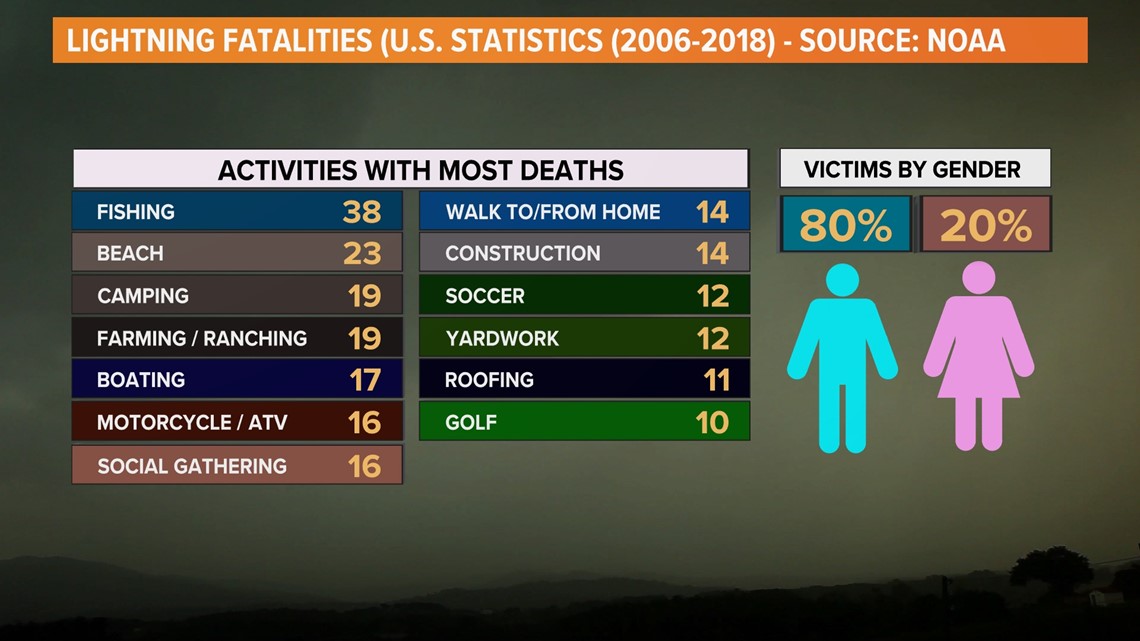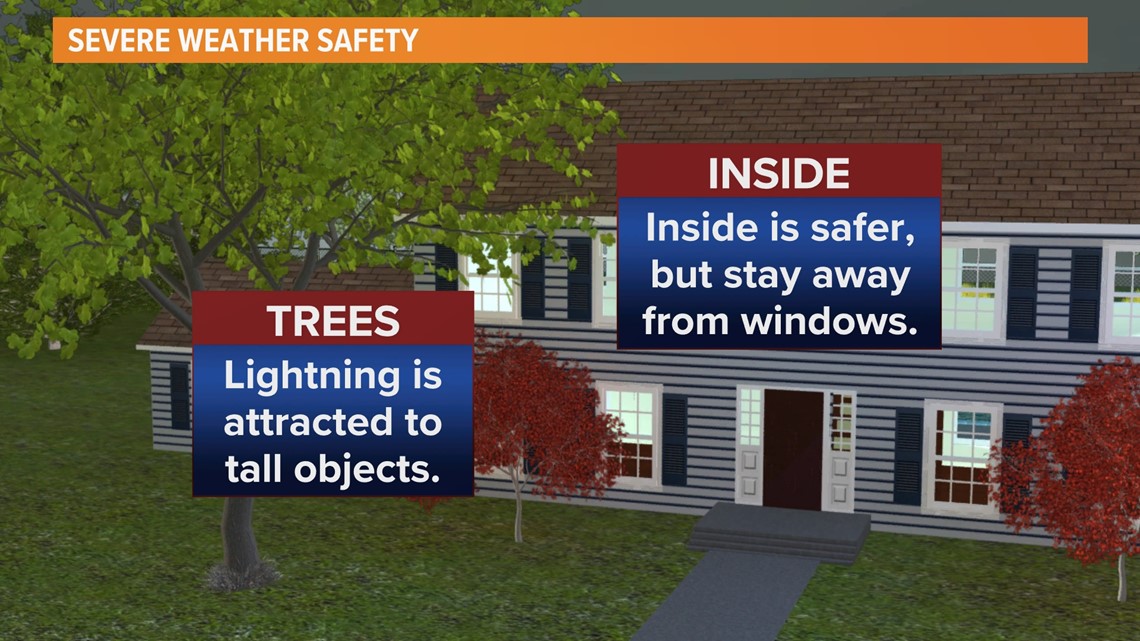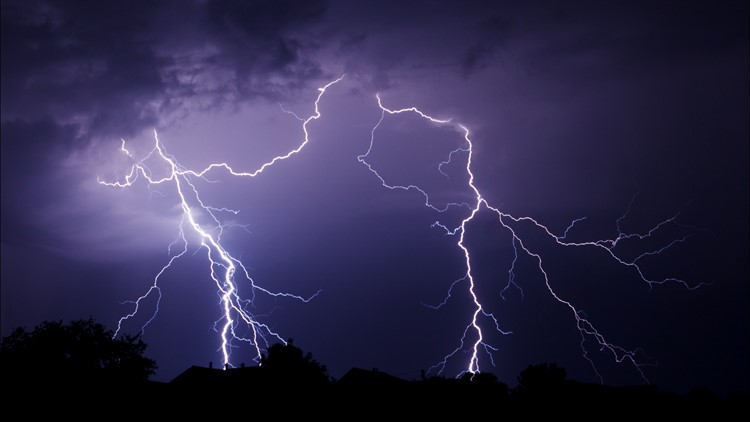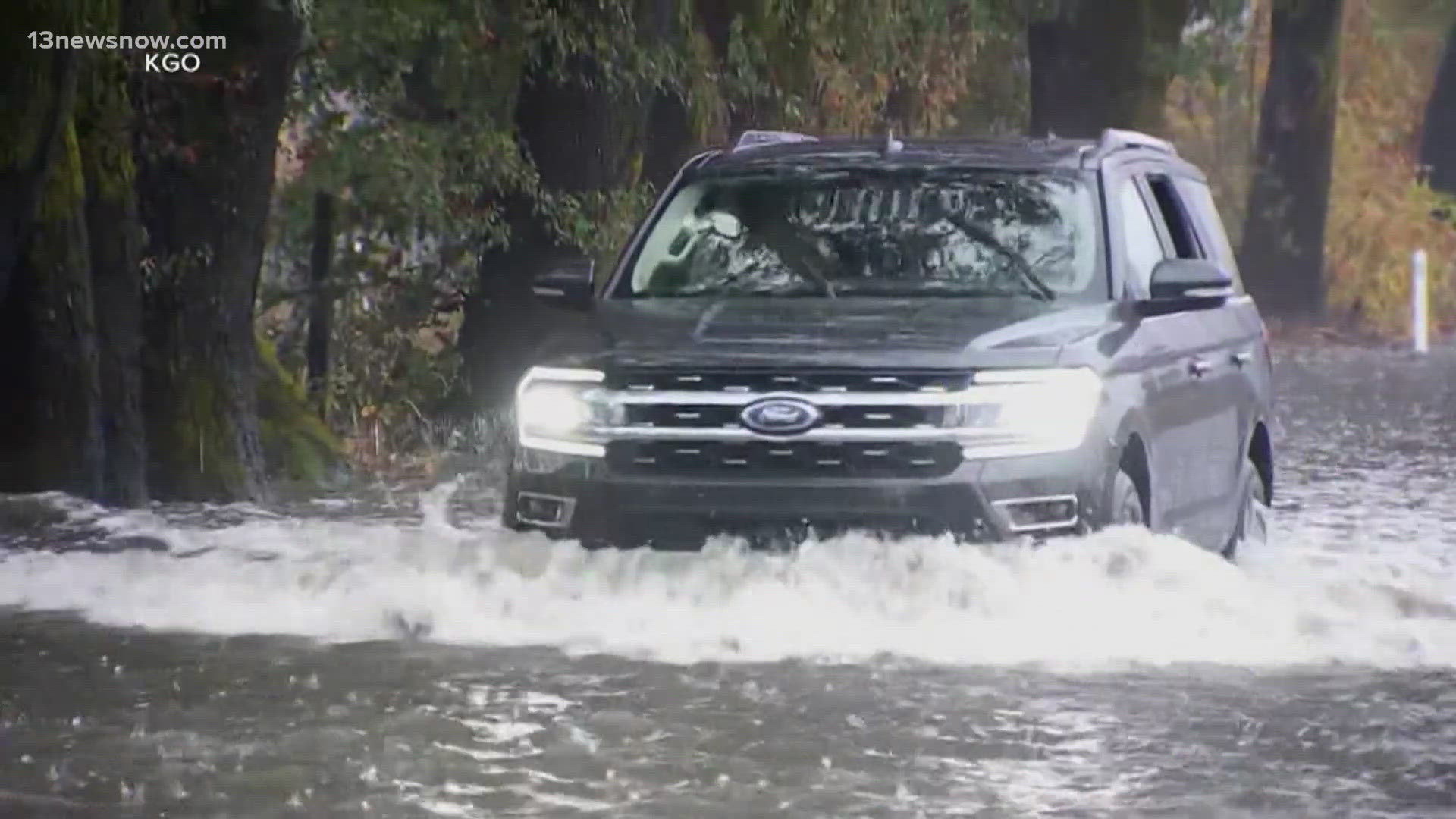NORFOLK, Va. — It's day three of Virginia's Severe Weather Awareness week, and it's time to address lightning and the dangers associated with it.
Let's start with what lightning is and how it occurs.
Lightning is the visible electrical discharge between clouds, clouds and air, or clouds and the ground. Here is a diagram explaining what happens between a cloud and the ground leading up to and during a lightning strike.


This is not a rare occurrence.
Lightning strikes the United States somewhere around 25 million times each year.
According to the National Oceanic and Atmospheric Administration (NOAA,) over a 30-year period from 1992 to 2021, lightning was the fifth weather-related killer in the United States, averaging 37 fatalities a year. With improved lightning detection and communications, over the past 10 years, the yearly average has lowered to 23.
The Centers for Disease Control and Prevention (CDC) keeps statistics on lightning, and points out that from 2006 through 2021, the average age of lightning victims was 37, males were four times more likely to be struck, and about one-third of lightning injuries occurred indoors.


The states with the most lightning deaths and injuries are Florida, Texas, Colorado, North Carolina, Alabama, Arizona, Georgia, Missouri, New Jersey and Pennsylvania. Florida may be the "Sunshine State," but it is also considered the “lightning capital” of the United States, with more than 2,000 lightning injuries reported over the past 50 years.
So, clearly, lightning is dangerous and should be taken seriously when thunderstorms develop!
It is important to note that a storm does not need to be "severe" to produce dangerous and deadly lightning! By definition, a thunderstorm produces lightning and thunder.
The first and most important rule of lightning safety is, "When thunder roars, go indoors!" Another way to put it when it comes to lightning and thunder... "When you see it (lightning), flee it! When you hear it (thunder), clear it!" If you are outside and exposed to the elements, get to a safer place immediately.
Sometimes you may see a flash of lightning in the distance, and you may not hear the lightning because other things around you are loud or distracting. Or maybe you have your back to the lightning when it flashes, and you never see it, and you only hear the thunder. In either case, get inside a sturdy enclosed structure as soon as possible.
Remember, there is no completely safe place outdoors during a thunderstorm. The only way to greatly reduce your risk of being struck is to get inside a safe building or vehicle.


The National Weather Service lightning safety website offers these tips to slightly lower the risk of being struck if you are caught outside with absolutely no way to get to safety:
- Avoid open fields, and the top of a hill or along a ridge.
- Stay away from tall, isolated trees and light posts. If you are in a forest, stay near a lower stand of trees.
- Groups caught outside should spread apart to avoid the current traveling between group members.
- Get out of pools immediately and stay away from water, wet items, such as ropes, and metal objects, such as fences and poles. These things are excellent conductors of electricity and the current from a lightning flash will easily travel for long distances.


While your chances of avoiding being struck by lightning increase significantly inside a safe building, injuries can occur indoors too.
So, the National Weather Service website offers some tips on how to stay safe indoors too.
- Stay off corded phones, but you can use cordless phones and cellular phones and tablets.
- Don't touch electrical plugged-in equipment such as computers, TVs, or their cords. You can use remote controls safely.
- Avoid plumbing and connected fixtures. Do not wash your hands, take a shower or wash dishes.
- Stay away from exterior windows and doors.
- Stay off decks, balconies, porches and out of open garages or carports.
- Do not lie on concrete floors or lean against concrete walls.
- Protect your pets: Dog houses do not offer substantial protection, and dogs that are chained to trees or on metal runners are even more vulnerable to lightning strikes.
The National Weather Service has even more lightning and severe weather safety information online and is an excellent reference to review if you plan to go hiking or will be camping outdoors.



